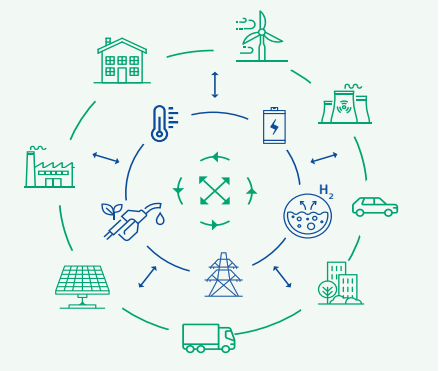
© iStock
Reducing greenhouse gas emissions by 55% and reaching a share of 45% renewables in 2030 can only happen if the energy system is ready for it. To achieve these objectives, Europe needs to build an energy system that is much smarter and more interactive than it is today.
With the electricity consumption expected to increase by around 60% between now and 2030, the electricity networks will need to integrate a large share of variable renewable power. Wind and solar generation capacity must increase from 400 GW in 2022 to at least 1,000 GW by 2030, including a large build-up of offshore renewables up to 317 GW, to be connected to shore.
Therefore, grids need to adapt to a more decentralised, digitalised and flexible electricity system with millions of rooftop solar panels and local energy communities sharing resources.
Investing in digital technologies such as IoT devices and smart meters, 5G and 6G connectivity, a pan-European energy data space powered by Cloud-edge computing servers, and digital twins of the electricity system is instrumental to accelerating the digital and sustainable energy transition, while bringing benefits to our everyday life.

Figure 1: Future EU integrated energy system: energy flows between users and producers, reducing wasted resources and money ©European Union; Source: EU strategy on energy system integration (europa.eu)
Digitalisation is already underway in the energy sector, as in many other industries. Electric vehicles, solar panels, heat pumps, and numerous other devices are equipped with smart technologies that generate data and enable remote control. The number of active IoT devices in the world is expected to grow rapidly and surpass 25.4 billion in 2030, while 51% of all households and SMEs in the EU have smart electricity meters. The EU’s digital and energy policies guide in a coordinated manner the digitalisation of the European energy system, as issues like data interoperability, security of supply, cybersecurity, privacy, and consumer protection cannot be left to the market alone, and an appropriate implementation is essential.
Digitalising the energy system - EU action plan
To support this transformation, the Commission is undertaking a series of actions through legislative initiatives, investments, and coordination with Member States.
In the medium term, digitalisation will facilitate seamless interactions among diverse actors, enabling consumers to benefit from domestic energy sources such as solar panels and community-owned wind turbines.
For example, consumers could participate in energy communities and collective self-consumption schemes, taking advantage of their own solar panel generation and benefit from lower cost electricity than buying from the grid. Similarly, bidirectional electric vehicle charging could provide additional energy resources during peak hours.
Figure 2: Directorate-General for Communications Networks, Content and Technology (DG CONNECT) support actions for the digitalisation of the energy system. © European Commission
In the long-term, digitalisation will be a necessity for integrating decentralised forms of renewable energy sources into the electricity grid, reducing dependence on imported fossil fuels and their price volatility. This integration requires more attention to grid management and more grid flexibility at local level, which can be achieved through activation of consumers and better management of prosumers’ energy assets.
A seamless access to granular data about the state of the electricity grid and prosumer assets will be critical for delivering energy services but can only be achieved through widespread digital tools and shared data infrastructure.
One of the key deliverables of the Action Plan is the development of a Common European Reference Framework (CERF) for energy-saving applications. 2023 marked a pivotal year in the implementation of this action, with the successful delivery in March 2023 of the first-generation blueprint for a CERF for energy-saving applications under the Horizon 2020 - supported InterConnect project.
Preparations also started for the deployment of the second generation blueprint of the CERF for energy-saving applications, in the context of the DIGITAL Programme. More details on this work can be consulted here: Delivering on our promise to deploy a Common European Reference Framework for Energy-saving Applications | Shaping Europe’s digital future (europa.eu).
Latest News
Related Content
Big Picture
Digital industrial platforms are key to placing Europe ahead in the digital transformation, linking technology building blocks and industrial applications.
Dig deeper
The EU policy promoting strategies for data, cloud and edge, and cybersecurity are central to the digitalisation of the energy system.
The EU leads the energy sector's digital and green transformation through key initiatives on research, innovation, and cross-border infrastructure, essential for digital integration.
See Also
The EU supports the transport sector by rolling out new technologies in order to become cleaner, safer and more effective.
The Commission has set up large-scale pilots to drive the digitisation of agriculture in Europe.
The Commission has established numerous large-scale pilots to help drive the digitisation of industry across Europe and beyond in recent years.
